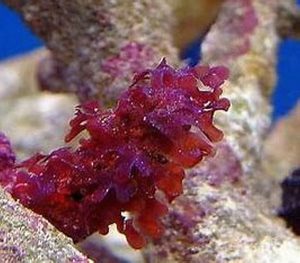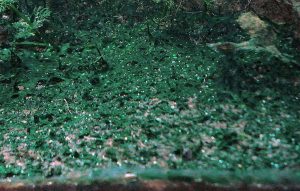Controlling algae in your aquarium has been the bane of almost every tropical fish keeping enthusiast but contrary to popular belief, not all algae in your aquarium is bad; in fact many species are beneficial to your aquarium’s ecosystem for a number of reasons.
- Many species of fish and invertebrates forage on algae as their primary diet and must have a steady supply to live.
- Algae acts as a filtration system in your tank and helps keep the water clean
- Several species of algae are quite attractive and can enhance the overall ambiance of your aquarium, especially some marine varieties.
- Because algae can survive in worse than pristine water conditions than aquarium plants, they are able to absorb diverse compounds that plants cannot use and indirectly enhance their growth.
- Algae employ photosynthesis to convert light and organic nutrients in the tank into new algae growth. Like plants, algae produce oxygen during the day and consume it at night.
No aquarium, regardless of how perfectly it is maintained and planted is ever 100% spotlessly free of algae, which is why we need to learn how to appropriately control it in our tanks.
Some algae in your aquarium is actually necessary and can be beneficial, but like anything else, too much can be disastrous.
Why We Have Algae In Our Tanks
The reason we have algae in our tanks is because of an imbalance of nutrients, light, or often both. Aquarium plants require just the right amount of light and nutrients in the water to grow.
If you give your plants too much light without the correct amount of nutrients to grow, algae will take advantage of the excess light and begin to colonize. Conversely, if you provide your plants with too many nutrients and not enough light, algae will quickly take advantage of the excessive amount of nutrients and multiply.
Light is the catalyst that regulates how fast the plants in your tank can utilize the nutrients provided.
Maintaining a perfectly balanced planted aquarium is virtually impossible because, even if you have everything in balance today, things are continuously changing. As the plants in the tank grow or when you prune them or remove them, the amount of nutrients and light they require will change giving an opportunity for algae to take over in the tank.
Below are several methods of controlling algae in your aquarium:
- Reduce The Amount of Light In Your Tank.
Because algae needs light to survive, limiting the spectrum, duration, and/or intensity of artificial light needed by your fish, plants, or coral can help reduce the amount of algae in your tank. Red and warm colors in the light spectrum will increase plant and algae growth. Change the color or adjust it if you have LED lighting to slow or stop algae growth. If you use florescent lamp lighting, replace the bulbs annually.
The duration of lighting over your tank should be between 6 to 12 hours a day. If you begin to experience algae problems, try cutting down the duration to only 6 hours. Although the sun is up for 12 hours in nature, the sun never shines equally bright all day long. Modern LED lights that have dawn to dusk effects that allow tropical fish keeping enthusiasts to run their lights longer without being at maximum intensity all day.
Intensely bright lighting will also cause excessive algae growth, especially in saltwater reef tanks. If you don’t have coral or plants, use enough light to view the fish. If you do have coral and/or plants, don’t use lighting that is brighter than what is needed by the corals. Adjustable LED lighting is now available for reef tanks that can be timed to turn up or down should the lighting be too intense.
- Add Herbivores To Your Tank
Most tropical fish keeping enthusiasts simply add snails, Plecostomus, shrimp, otocinclus, or flag fish to their freshwater aquariums to control algae in their aquariums.
A variety of reef cleaning packages with turbo snails, crabs, blennies, tangs, limpets, and sea urchins can be added to salt water aquariums for algae control. Although these animals do the heavy lifting for the removal of algae in the tank, you may still have to do some selective scrubbing to remove excess algae.
- Scrub Out Algae
Manually scrubbing excess algae from your aquarium with a razor blade or algae scrubber is the best way to remove algae quickly. Remove the algae from the tank after scrubbing it from a surface. If you don’t remove the algae from the aquarium after you scrape or knock it off the glass and rocks, it will simply reattach itself to a new surface and regrow. Coincide algae scrubbing with your water changes to gravel vac the removed algae from the tank.
- Reduce The Amount Of Food
Overfeeding your fish in an aquarium usually leads to an excess of nutrients in the water that will ultimately cause an algae bloom. Algae is photosynthetic. Like any plant, it uses light, CO2, and nutrients to grow. Therefore, to reduce the amount of nutrients that enter your tank, only feed your fish what they can eat in 5 minutes and keep you tank stocked at minimal levels.
- Raise The pH Of The Tank Water
Because low pH is linked to high CO2 levels that help algae grow, you can slowly raise the pH by either adding a pH buffer, ventilating the aquarium, or by using kalkwasser in marine aquariums.
- Increasing The Water Flow
Many algae species prefer or thrive in slow moving or stagnant water. Using a power head to provide a high water flow will keep debris suspended in the water column where it can be removed from the tank by the filtration system. Cyanobacteria or blue green algae, is one of the most difficult algae to remove from an aquarium, but it can completely disappear with high flow. Power heads such as Rossmont Movers or Hydor Koralias to increase flow.
- Add Additional Filtration
In the majority of cases, excess nutrients are the cause of algae blooms. Nuisance algae can be starved of excess nutrients in most cases by upgrading your filtration system. The easiest, most economical way to help rid your tank of algae is to add chemical filtration to your system.
Phosphate removers, carbon, and various resins can all help reduce algae in an aquarium. Phosphate removers are extremely effective at inhibiting algae growth. Among others, products such as Coral Vue GFO, Seachem PhosGuard, and Blue Life Phos FX all work well.
- Refugiums
Refugiums will also help prevent algae blooms in saltwater tanks. A refugium is a protected area inside or outside of your tank where you can grow a seaweed like algae that out competes nuisance algae buildups in your tank.
If you already have a sump, you can use the refugium that came with it or add a commercial refugium like CPR Aquatic In-Tank Refugium. If you have an aquarium with a back filtration chamber, one of the chambers can be made into a refugium by introducing a light source over the chamber. LED lighting like the Tunze Eco Chic LED Light or the high powered Kessil H80 Tuna Flora LED Light work well and will greatly enhance the efficiency of your refugium.
- Add a UV Sterilizer
Adding a temporary or permanent UV sterilizer to your system will effectively remove free floating algae (green water) and inhibit the spread of other algae in your aquarium.
A UV sterilizer is nothing more than an shielded Ultraviolet lamp that water is pumped around. As algae and other microorganisms pass through the UV sterilizer, the ultraviolet light kills them. This is why UV sterilizers are so effective at killing free floating algae that causes green water. The UV sterilizer kills the algae spores and algae that is scrubbed off of the glass and rocks before it has a chance to reattach to a new surface, hence it stops unwanted algae from spreading.
- Algaecides
Although we do not normally recommend algaecides as the first step in eliminating algae, they are extremely effective in eliminating Cyanobacteria algae and other difficult to remove algae. Among others, products like Blue Life RedCyano RX, or ChemiClean are extremely effective at removing stubborn algae.
Controlling algae in your aquarium or trying to completely eliminate it will usually not be accomplished by using only one of the above steps, especially if you have a severe buildup. Your best bet is to undertake several of the above steps.
For example; a severe bloom of Cyanobacteria or purple algae covering the plants, driftwood, rocks, etc. in your tank can initially be handled by scrubbing off the algae with a toothbrush.
Heavy growths on the plants should be removed by rubbing hardy plant leaves or thinning them out. The scrubbed off algae then needs to be removed by netting or siphoning from the tank. Do frequent water changes to reduce the amount of nutrients in the tank and add a chemical bag of Phosguard to the filtration system.
Tropical fish keeping enthusiasts frequently see Cyanobacteria or blue green algae pop up when organic waste has a chance to stagnate in one or more areas of the fish tank. This occurs when:
- There is not enough current in the fish tank
- A corner of the aquarium is exposed to constant light or décor is blocking off a corner of the tank
- The gravel hasn’t been vacuumed in a while and the substrate is collecting debris.
- There are not enough animals (snails, catfish, loaches, etc.) in the tank to churn churn the substrate.
Studies show that Cyanobacteria commonly occur in warm, slow moving, nutrient rich bodies of water. This means that in addition to the above, you should clean the filters frequently, add a powerhead or stronger water flow filter, rearrange the décor in the tank, don’t overfeed, and reduce the amount and/or duration of light over the tank.
Adding Nerite snails, Plecostomus, or algae eating species does no good for this algae because most species dislike the taste of Cyanobacteria.
If all of the above natural methods fail and you have a stubborn infestation of blue green algae that you can’t eradicate naturally; the last resort is to treat the aquarium with erythromycin, sold under Mardel’s trade name Maracyn®.
One packet of Maracyn will treat 10 gallons of aquarium water and is safe for fish, invertebrates, plants, and will not harm the beneficial bacteria in your aquarium. After vacuuming the substrate, scrubbing and removing as much of the algae as possible, and making a water change; treat the tank and let the aquarium sit for one week before performing another water change. Widespread infestations usually require several repeat treatments to completely eliminate the colony.



